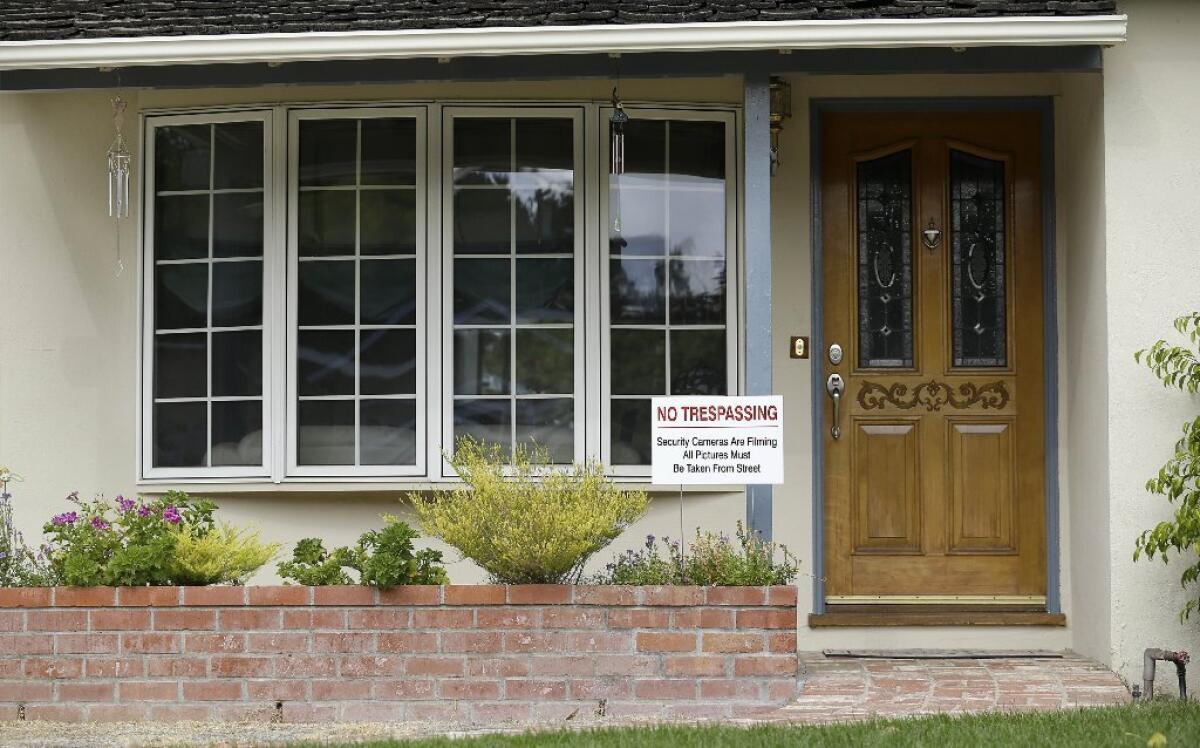I pledge allegiance to ... Silicon Valley!

- Share via
Texas has threatened to secede so often that a lot of blue America is thinking, yeah, sure, why not?
But it’s Silicon Valley where there is a “let my people go” discussion going on, ever since a businessman and Stanford lecturer named Balaji S. Srinivasan gave a speech saying that when tech companies start to get creaky and outdated, you bail and start your own. Same, perhaps, with something like a country.
Silicon Valley has a distinct character, certainly, a libertarian bent that seems to coexist quite comfortably with publicly supported institutions such as UC Berkeley and the Lawrence Livermore Laboratory.
The opt-out impulse to “dissolve the political bands,” as the Declaration of Independence puts it, has happened time and again in American history.
Utopian colonies like Fruitlands Transcendentalists of New England, the Oneida religious community that started out as millenialists and ended up making nice flatware and even the Llano del Rio commune 100 years ago in the Antelope Valley separated themselves from society, thrived and waned. Silicon Valley’s is an entrepreneurial spirit coupled with a near-religious fervor that software can save the world.
The secession chatter prompted the Wall Street Journal to opine about Silicon Valley’s “superiority complex.”
So what might it be like, the nation of Silicon Valley? Would it have to change its name? Or is “Silicon Valley” too valuable a brand to monkey with?
What would the Silicon Valley national flag look like? They’d probably crowdsource it — or you could buy a flag design upgrade for $4.95 a month, $50 a year if you buy now.
Silicon Valley used to be called the Valley of Heart’s Delight because of the profusion of flowering, fragrant orchards. So maybe the flag could start with a coat of arms: a gules plum tree, quartered with a microchip or on a vert field that looks like the fabled double doors of the Hewlett-Packard garage. It would appear on every official Silicon Valley document, including the Faraday cage-protected passport, which would also show the bearer’s 3-D holographic photo.
It would need a national anthem: the sardonic “My PDF Files” by Umlala? “Modern Things” by Bjork?
Silicon Valley would have to field an ambassadorial corps, of course, and maybe it could figure out how to maintain a virtual embassy to China to avoid those embarrassing software spying problems one hears about.
Would it decide to assemble its own cabinet functions — border control, homeland security, environmental protection agency — or would it contract those services out to the state of California, or the feds? I can’t imagine there’d be too much call for a Silicon Valley DEA.
But it could easily field an air force composed entirely of drones, and it would have an immense Department of Intellectual Property that could use those drones to surveil for software thieves.
A Silicon Valley court system would surely be needed to sit in judgment of tech issues, like challenges to the country’s constitutional regulations governing the use of Google Glass. (A Seattle restaurant kicked out a “rude” Google Glass-wearing patron, and the CHP cited a woman for wearing them behind the wheel.)
There are certain demographic issues Silicon Valley would still face as a nation that it does as a region. For one, housing prices have been driven so high by tech millionaires that hourly workers have a hard time finding places to live close to where they work. Silicon Valley would probably have to build affordable housing for them or pay them a lot more, since waiting at passport control at the California-Silicon Valley border every morning and evening would deter even the hardiest commuter. But without that working-class class, who would clean up the empty pizza boxes and launder the hoodies?
Vending machines and ATMs would have to be reengineered to accept Bitcoins.
And there’s that gender gap in the tech world, a product of the “bro-grammer” culture. Exhibit A:
Silicon Valley the country might have to levy a massive public loo-construction project bond as an early order of business.
Money for Lawrence Livermore and Berkeley would have to come from Silicon Valley itself, or come in the form of U.S. foreign aid, rather than federal funds.
What kind of political leadership would it have? Could it afford any? Public officials in the United States often earn less in public service than they would in the private sector, so would Silicon Valley have to pay competitively to attract good candidates? A million a year, with stock options?
Here’s the million-Bitcoin question that I have not yet seen answered: What can’t Silicon Valley do now, in the United States, that it could as its own nation?
I’d love to see a draft of a constitution for Silicon Valley; maybe some civics student will read this and give it a shot, and tweak that line from Lincoln so it reads something about government “of the technology, by the technology and for the technology.”
ALSO:
Immigration overreach by states, towns
Five disheartening moments for women in 2013 — and one disappointment
Follow Patt Morrison on Twitter @pattmlatimes
More to Read
A cure for the common opinion
Get thought-provoking perspectives with our weekly newsletter.
You may occasionally receive promotional content from the Los Angeles Times.










